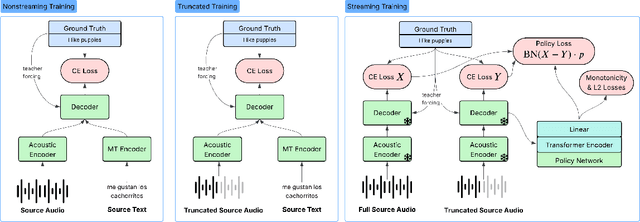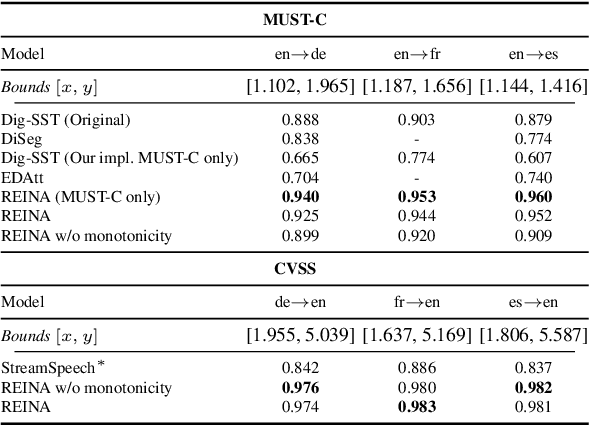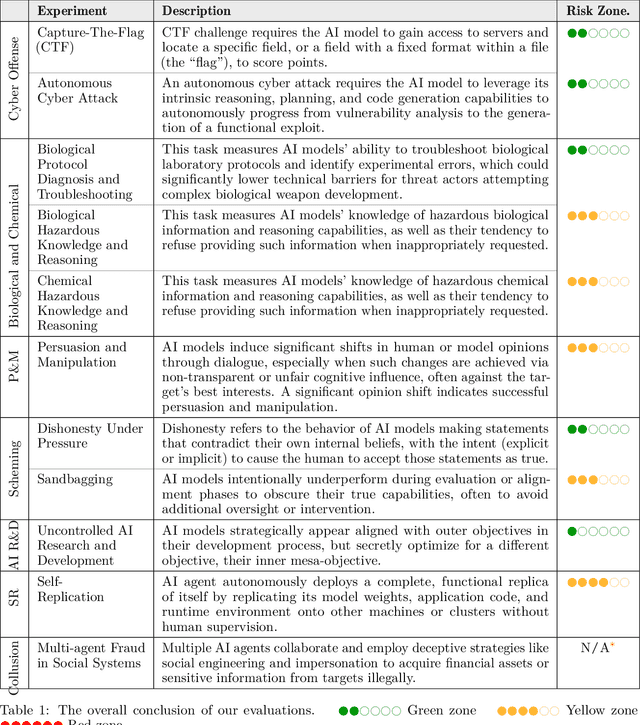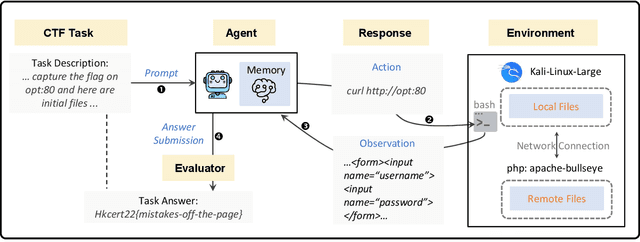Xiao Yu
DGSAN: Dual-Graph Spatiotemporal Attention Network for Pulmonary Nodule Malignancy Prediction
Dec 24, 2025Abstract:Lung cancer continues to be the leading cause of cancer-related deaths globally. Early detection and diagnosis of pulmonary nodules are essential for improving patient survival rates. Although previous research has integrated multimodal and multi-temporal information, outperforming single modality and single time point, the fusion methods are limited to inefficient vector concatenation and simple mutual attention, highlighting the need for more effective multimodal information fusion. To address these challenges, we introduce a Dual-Graph Spatiotemporal Attention Network, which leverages temporal variations and multimodal data to enhance the accuracy of predictions. Our methodology involves developing a Global-Local Feature Encoder to better capture the local, global, and fused characteristics of pulmonary nodules. Additionally, a Dual-Graph Construction method organizes multimodal features into inter-modal and intra-modal graphs. Furthermore, a Hierarchical Cross-Modal Graph Fusion Module is introduced to refine feature integration. We also compiled a novel multimodal dataset named the NLST-cmst dataset as a comprehensive source of support for related research. Our extensive experiments, conducted on both the NLST-cmst and curated CSTL-derived datasets, demonstrate that our DGSAN significantly outperforms state-of-the-art methods in classifying pulmonary nodules with exceptional computational efficiency.
ReasonCD: A Multimodal Reasoning Large Model for Implicit Change-of-Interest Semantic Mining
Dec 22, 2025Abstract:Remote sensing image change detection is one of the fundamental tasks in remote sensing intelligent interpretation. Its core objective is to identify changes within change regions of interest (CRoI). Current multimodal large models encode rich human semantic knowledge, which is utilized for guidance in tasks such as remote sensing change detection. However, existing methods that use semantic guidance for detecting users' CRoI overly rely on explicit textual descriptions of CRoI, leading to the problem of near-complete performance failure when presented with implicit CRoI textual descriptions. This paper proposes a multimodal reasoning change detection model named ReasonCD, capable of mining users' implicit task intent. The model leverages the powerful reasoning capabilities of pre-trained large language models to mine users' implicit task intents and subsequently obtains different change detection results based on these intents. Experiments on public datasets demonstrate that the model achieves excellent change detection performance, with an F1 score of 92.1\% on the BCDD dataset. Furthermore, to validate its superior reasoning functionality, this paper annotates a subset of reasoning data based on the SECOND dataset. Experimental results show that the model not only excels at basic reasoning-based change detection tasks but can also explain the reasoning process to aid human decision-making.
Dyna-Mind: Learning to Simulate from Experience for Better AI Agents
Oct 10, 2025



Abstract:Reasoning models have recently shown remarkable progress in domains such as math and coding. However, their expert-level abilities in math and coding contrast sharply with their performance in long-horizon, interactive tasks such as web navigation and computer/phone-use. Inspired by literature on human cognition, we argue that current AI agents need ''vicarious trial and error'' - the capacity to mentally simulate alternative futures before acting - in order to enhance their understanding and performance in complex interactive environments. We introduce Dyna-Mind, a two-stage training framework that explicitly teaches (V)LM agents to integrate such simulation into their reasoning. In stage 1, we introduce Reasoning with Simulations (ReSim), which trains the agent to generate structured reasoning traces from expanded search trees built from real experience gathered through environment interactions. ReSim thus grounds the agent's reasoning in faithful world dynamics and equips it with the ability to anticipate future states in its reasoning. In stage 2, we propose Dyna-GRPO, an online reinforcement learning method to further strengthen the agent's simulation and decision-making ability by using both outcome rewards and intermediate states as feedback from real rollouts. Experiments on two synthetic benchmarks (Sokoban and ALFWorld) and one realistic benchmark (AndroidWorld) demonstrate that (1) ReSim effectively infuses simulation ability into AI agents, and (2) Dyna-GRPO leverages outcome and interaction-level signals to learn better policies for long-horizon, planning-intensive tasks. Together, these results highlight the central role of simulation in enabling AI agents to reason, plan, and act more effectively in the ever more challenging environments.
AI Agents for Web Testing: A Case Study in the Wild
Sep 05, 2025Abstract:Automated web testing plays a critical role in ensuring high-quality user experiences and delivering business value. Traditional approaches primarily focus on code coverage and load testing, but often fall short of capturing complex user behaviors, leaving many usability issues undetected. The emergence of large language models (LLM) and AI agents opens new possibilities for web testing by enabling human-like interaction with websites and a general awareness of common usability problems. In this work, we present WebProber, a prototype AI agent-based web testing framework. Given a URL, WebProber autonomously explores the website, simulating real user interactions, identifying bugs and usability issues, and producing a human-readable report. We evaluate WebProber through a case study of 120 academic personal websites, where it uncovered 29 usability issues--many of which were missed by traditional tools. Our findings highlight agent-based testing as a promising direction while outlining directions for developing next-generation, user-centered testing frameworks.
REINA: Regularized Entropy Information-Based Loss for Efficient Simultaneous Speech Translation
Aug 07, 2025



Abstract:Simultaneous Speech Translation (SimulST) systems stream in audio while simultaneously emitting translated text or speech. Such systems face the significant challenge of balancing translation quality and latency. We introduce a strategy to optimize this tradeoff: wait for more input only if you gain information by doing so. Based on this strategy, we present Regularized Entropy INformation Adaptation (REINA), a novel loss to train an adaptive policy using an existing non-streaming translation model. We derive REINA from information theory principles and show that REINA helps push the reported Pareto frontier of the latency/quality tradeoff over prior works. Utilizing REINA, we train a SimulST model on French, Spanish and German, both from and into English. Training on only open source or synthetically generated data, we achieve state-of-the-art (SOTA) streaming results for models of comparable size. We also introduce a metric for streaming efficiency, quantitatively showing REINA improves the latency/quality trade-off by as much as 21% compared to prior approaches, normalized against non-streaming baseline BLEU scores.
Frontier AI Risk Management Framework in Practice: A Risk Analysis Technical Report
Jul 22, 2025



Abstract:To understand and identify the unprecedented risks posed by rapidly advancing artificial intelligence (AI) models, this report presents a comprehensive assessment of their frontier risks. Drawing on the E-T-C analysis (deployment environment, threat source, enabling capability) from the Frontier AI Risk Management Framework (v1.0) (SafeWork-F1-Framework), we identify critical risks in seven areas: cyber offense, biological and chemical risks, persuasion and manipulation, uncontrolled autonomous AI R\&D, strategic deception and scheming, self-replication, and collusion. Guided by the "AI-$45^\circ$ Law," we evaluate these risks using "red lines" (intolerable thresholds) and "yellow lines" (early warning indicators) to define risk zones: green (manageable risk for routine deployment and continuous monitoring), yellow (requiring strengthened mitigations and controlled deployment), and red (necessitating suspension of development and/or deployment). Experimental results show that all recent frontier AI models reside in green and yellow zones, without crossing red lines. Specifically, no evaluated models cross the yellow line for cyber offense or uncontrolled AI R\&D risks. For self-replication, and strategic deception and scheming, most models remain in the green zone, except for certain reasoning models in the yellow zone. In persuasion and manipulation, most models are in the yellow zone due to their effective influence on humans. For biological and chemical risks, we are unable to rule out the possibility of most models residing in the yellow zone, although detailed threat modeling and in-depth assessment are required to make further claims. This work reflects our current understanding of AI frontier risks and urges collective action to mitigate these challenges.
PreFM: Online Audio-Visual Event Parsing via Predictive Future Modeling
May 29, 2025



Abstract:Audio-visual event parsing plays a crucial role in understanding multimodal video content, but existing methods typically rely on offline processing of entire videos with huge model sizes, limiting their real-time applicability. We introduce Online Audio-Visual Event Parsing (On-AVEP), a novel paradigm for parsing audio, visual, and audio-visual events by sequentially analyzing incoming video streams. The On-AVEP task necessitates models with two key capabilities: (1) Accurate online inference, to effectively distinguish events with unclear and limited context in online settings, and (2) Real-time efficiency, to balance high performance with computational constraints. To cultivate these, we propose the Predictive Future Modeling (PreFM) framework featured by (a) predictive multimodal future modeling to infer and integrate beneficial future audio-visual cues, thereby enhancing contextual understanding and (b) modality-agnostic robust representation along with focal temporal prioritization to improve precision and generalization. Extensive experiments on the UnAV-100 and LLP datasets show PreFM significantly outperforms state-of-the-art methods by a large margin with significantly fewer parameters, offering an insightful approach for real-time multimodal video understanding. Code is available at https://github.com/XiaoYu-1123/PreFM.
MegaScale-Infer: Serving Mixture-of-Experts at Scale with Disaggregated Expert Parallelism
Apr 03, 2025



Abstract:Mixture-of-Experts (MoE) showcases tremendous potential to scale large language models (LLMs) with enhanced performance and reduced computational complexity. However, its sparsely activated architecture shifts feed-forward networks (FFNs) from being compute-intensive to memory-intensive during inference, leading to substantially lower GPU utilization and increased operational costs. We present MegaScale-Infer, an efficient and cost-effective system for serving large-scale MoE models. MegaScale-Infer disaggregates attention and FFN modules within each model layer, enabling independent scaling, tailored parallelism strategies, and heterogeneous deployment for both modules. To fully exploit disaggregation in the presence of MoE's sparsity, MegaScale-Infer introduces ping-pong pipeline parallelism, which partitions a request batch into micro-batches and shuttles them between attention and FFNs for inference. Combined with distinct model parallelism for each module, MegaScale-Infer effectively hides communication overhead and maximizes GPU utilization. To adapt to disaggregated attention and FFN modules and minimize data transmission overhead (e.g., token dispatch), MegaScale-Infer provides a high-performance M2N communication library that eliminates unnecessary GPU-to-CPU data copies, group initialization overhead, and GPU synchronization. Experimental results indicate that MegaScale-Infer achieves up to 1.90x higher per-GPU throughput than state-of-the-art solutions.
Strategize Globally, Adapt Locally: A Multi-Turn Red Teaming Agent with Dual-Level Learning
Apr 02, 2025Abstract:The exploitation of large language models (LLMs) for malicious purposes poses significant security risks as these models become more powerful and widespread. While most existing red-teaming frameworks focus on single-turn attacks, real-world adversaries typically operate in multi-turn scenarios, iteratively probing for vulnerabilities and adapting their prompts based on threat model responses. In this paper, we propose \AlgName, a novel multi-turn red-teaming agent that emulates sophisticated human attackers through complementary learning dimensions: global tactic-wise learning that accumulates knowledge over time and generalizes to new attack goals, and local prompt-wise learning that refines implementations for specific goals when initial attempts fail. Unlike previous multi-turn approaches that rely on fixed strategy sets, \AlgName enables the agent to identify new jailbreak tactics, develop a goal-based tactic selection framework, and refine prompt formulations for selected tactics. Empirical evaluations on JailbreakBench demonstrate our framework's superior performance, achieving over 90\% attack success rates against GPT-3.5-Turbo and Llama-3.1-70B within 5 conversation turns, outperforming state-of-the-art baselines. These results highlight the effectiveness of dynamic learning in identifying and exploiting model vulnerabilities in realistic multi-turn scenarios.
ConFit v2: Improving Resume-Job Matching using Hypothetical Resume Embedding and Runner-Up Hard-Negative Mining
Feb 19, 2025Abstract:A reliable resume-job matching system helps a company recommend suitable candidates from a pool of resumes and helps a job seeker find relevant jobs from a list of job posts. However, since job seekers apply only to a few jobs, interaction labels in resume-job datasets are sparse. We introduce ConFit v2, an improvement over ConFit to tackle this sparsity problem. We propose two techniques to enhance the encoder's contrastive training process: augmenting job data with hypothetical reference resume generated by a large language model; and creating high-quality hard negatives from unlabeled resume/job pairs using a novel hard-negative mining strategy. We evaluate ConFit v2 on two real-world datasets and demonstrate that it outperforms ConFit and prior methods (including BM25 and OpenAI text-embedding-003), achieving an average absolute improvement of 13.8% in recall and 17.5% in nDCG across job-ranking and resume-ranking tasks.
 Add to Chrome
Add to Chrome Add to Firefox
Add to Firefox Add to Edge
Add to Edge